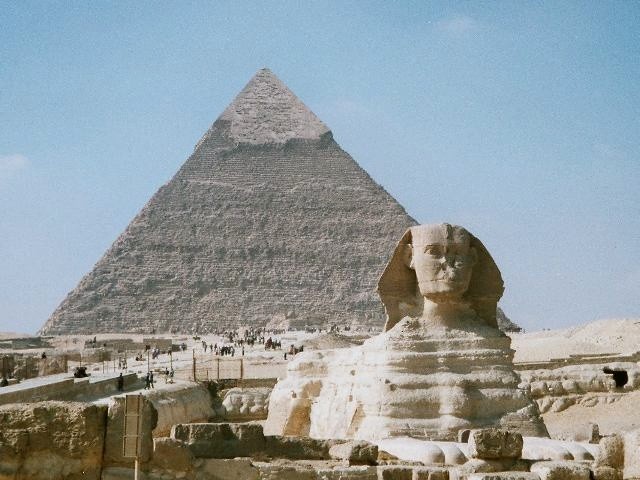Boriska Kipriyanovich recently claimed to be a Martian reincarnated on Earth said that secrets of the universe and the coming end could be found on the Ancient Egyptian Colossus--the Sphynx.
Likewise, Mark Lehner, an American Archaeologist, was first introduced to the mysteries of the Sphinx after being introduced to the infamous clairvoyant Edgar Cayce that saw how refugees from Atlantis buried their secrets famed civilization in a hall of records under the Sphinx.
What is the Great Sphinx of Giza?

The Sphinx, according to History, is a 4,500-year-old limestone megastructure near the Great Pyramid, Giza, Egypt. Measuring roughly 240 feet long and 66 feet high, it is one of the largest monuments in the world. Likewise, the Sphinx is one of the most recognizable relics of the Egyptians, with its origin and history still debated to this day.
A sphinx is a mythical creature with the body of a lion, the head of a human, and other variations. It is a prominent figure in Greek, Egyptian, and Asian mythology. It was regarded as a spiritual guardian in ancient Egypt and often depicted in a male Pharaoh headdress.
Searching for Records of a Lost Civilization
Mark Lehner didn't set out to uncover the mysteries of the Sphinx; however, after many chance occurrences, his fate seemed tied to the Egyptian colossus. Little was known about who, when, or why the Sphinx was erected. Lehner settled in, working for a total of five years in an office between the colossal paws of the Sphinx, examining every inch of the megastructure. The result was a detailed picture of the statue, patched surface, that earned Lehner a doctorate in Egyptology from Yale.
Recognized today as one of the leading Egyptologists and Sphinx authorities in the world, Lehner conducted various field research at Giza in the 37 years since he first landed in Egypt. Applying his knowledge and archaeological sleuthing in the two-square-mile radius of the Giza plateau, Lehner helped confirm speculations that Giza, including the Sphinx, was a part of a vast sacred machine designed by ancient Egyptians to harness the Sun's power to sustain both Earthly and divine order, reports the Smithsonian Magazine.
As Lehner longed for the fabled library of Atlantis, he discovered a Lost City.
Apparently, the Sphinx wasn't assembled piece-by-piece as the popular belief. In fact, it was carved from a single limestone mass exposed when workers dug a quarry in the Giza plateau. Roughly 66 feet tall and 240 feet long, it's one of the world's largest and oldest monolith statues.
Lehner implies that during the construction of the pyramids and the Sphinx, the epic feats of architecture and engineering were built in a time of dependable rainfall. Over time the structures dry out, and we are left with the marvelous structures and landscapes we have today. Recently sewage dumped in a nearby canal caused limestone chunks from the Sphinx to fall off. Although a disaster was avoided it gives a clue on the construction of the Egyptian Colossus.
Check out more news and information on Archaeology in Science Times.












